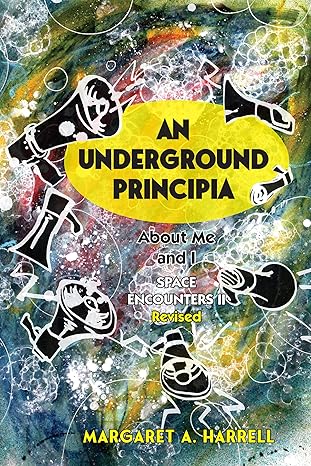Above, Pauli sits with Einstein.
Now both men are dead. Physics has undergone great advances with its grand unified theories and its current development of superstring theory. Yet the central question remains: What is the nature of Pauli’s great dream? What is that speculum that lies between the worlds of mind and matter? Will it be possible to develop a new physics and a new psychology which are complementary to each other?
– David Peat, “Divine Contenders”
An excerpt from the “Author’s Note” to the third volume in the Keep This Quiet! series, Initiations, is below:
The third in the series, Keep This Quiet! Initiations continues my memoir. As well as being a memoir, this book is indebted to Swiss psychiatrist Carl Jung (born in 1875) and Nobel Prize-winning physicist Wolfgang Pauli (born in 1900 in Vienna), who dreamed together of uniting physics with psychology. I attended the C. G. Jung Institute in Küsnacht, Switzerland, a suburb of Zurich, 1984‒87.
It was in Zurich I had my first initiation. The initiation built on the sudden (to me) death of Milton Klonsky (November 29, 1981), which baffled me, made me question whether death really existed in a nonphysical sense—a question I wanted to answer for myself by experience. Did the mind that told me “Some of us have more whites around the eyeballs. I was a crazy kid. You know what I was crazed by? Immortality” just vanish into dust? He went on: “I’ve died. But I’ve died into me; he’s still around. I can talk to that kid anytime I want to.”
Was his astonishing mind (that library of knowledge, beacon of sparkling insight) obliterated? Was all evidence of his lifetime decayed into soil and recycled?
I had to know. By closely following the experiences I was having after his death—in dreams and outer incidents—I hoped to find out. In that, the unconscious would help me, I believed; it had helped me as a writer since age seven.
Another major player in Keep This Quiet! III and IV is “the unconscious.” Some scientists have studied how we are aware of information before our brains register it; there is a delay; so what we act on might be unconscious information to which we quite accurately get the signal before we realize it consciously. Deeper than that, though, is the collective unconscious:
What is the unconscious? As Jung made central to his schema, there exists in addition to an individual unconscious that contains our personal memories, a deeper, highly structured collective (or objective) unconscious that is inherited. It is, as Jung put it, “the foundation of what the ancients called the ‘sympathy of all things.’” The physicist F. David Peat calls it “the common ground out of which matter and mind emerge.” But this is only the beginning point as to what that collective-unconscious mind is. Often I use the term “the unconscious,” in cases where it is clear which is meant but also because if you are unconscious in a situation, the mind is very often drawing from both personal and objective layers.
We know that until you can imagine something, believe it’s possible, you’re pretty sure not to see it around you even if it is. Your eyes will skim right over it, vowing it isn’t there. It seems wildly implausible, as did many experiences in this book until I had them myself. Even the eye refuses to cooperate. Peat puts it starkly: “Anthropologists have reported that aboriginal people shown snapshots of themselves usually can’t see anything but a swirl of abstract colors and shapes. They don’t know how to read that kind of map.”
Another important topic in this book is quite naturally initiations. Beginning when I lived in Zurich for three years, my life was filled with them. They were my teacher:
Initiations break down belief systems, using powerful means to divert our neural pathways, open up our hearts; if necessary, make us take our heads out of the sand. For me, as this story unfolds, experience—often contrary to what I supposed was true—became the teacher.
These initiations, beginning in 1985 (based first on the death of Milton Klonsky in 1981, which I didn’t learn about till the summer of 1982), took me to multidimensional places. Initiations are personal and transpersonal. They transform us—in this case, me. The unconscious, however, is still vital. It’s just that what is unconscious is in constant flux.
Initiations individually take us across our own stopping points, our own finishing lines where ribbons are broken. We burst across, out of breath, in a turmoil, turned topsy-turvy. These things happened to me. I began to discover a consciousness level far beyond my own.
But I had to learn for myself; everyone does. And this book is the result. For a lot of people today, there are boundaries ready to be pushed aside. I learned how to say what follows over the past twenty-seven years. Now the page is turned, and I walk into the book formed of those experiences, those initiations.
FIVE-STAR AMAZON REVIEW:


